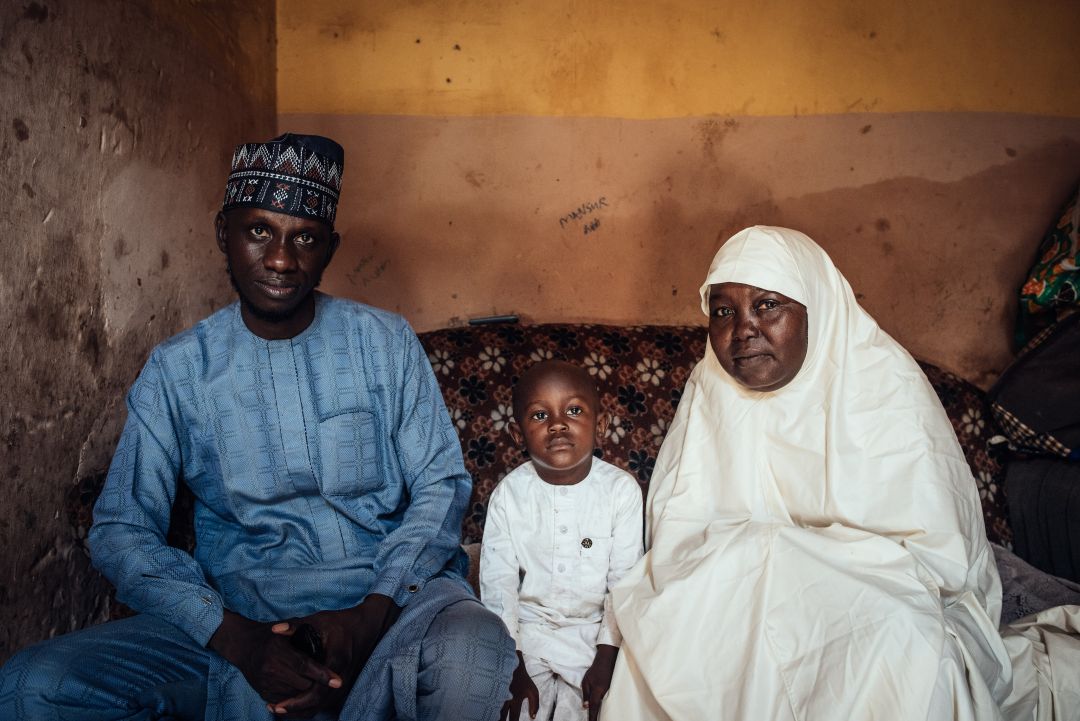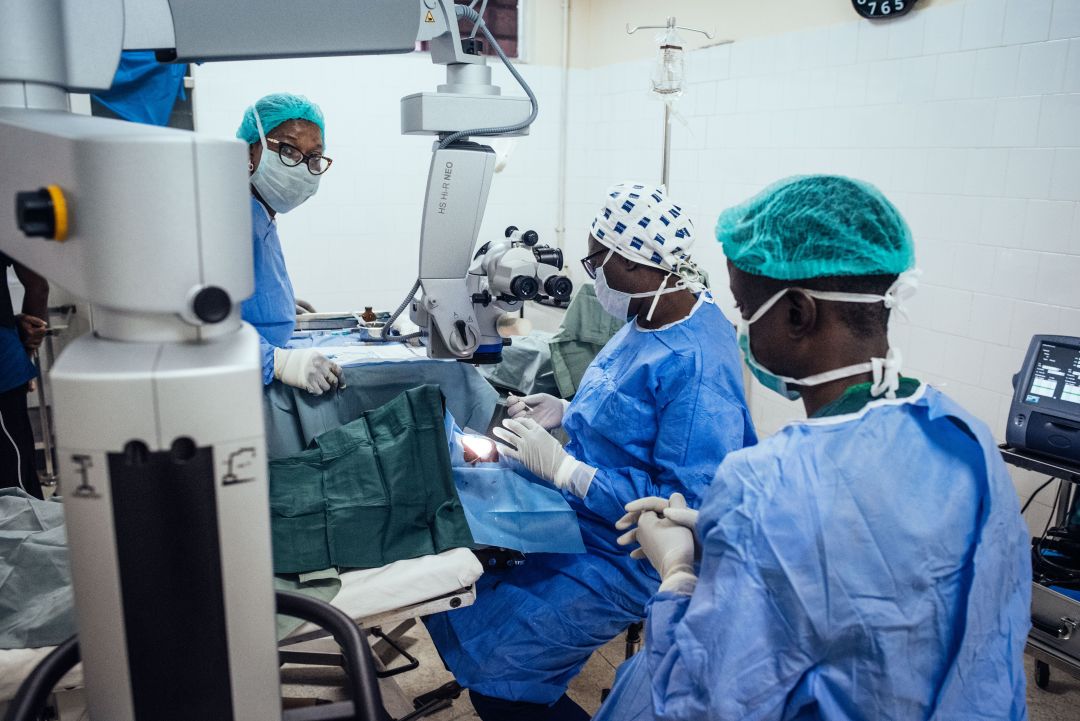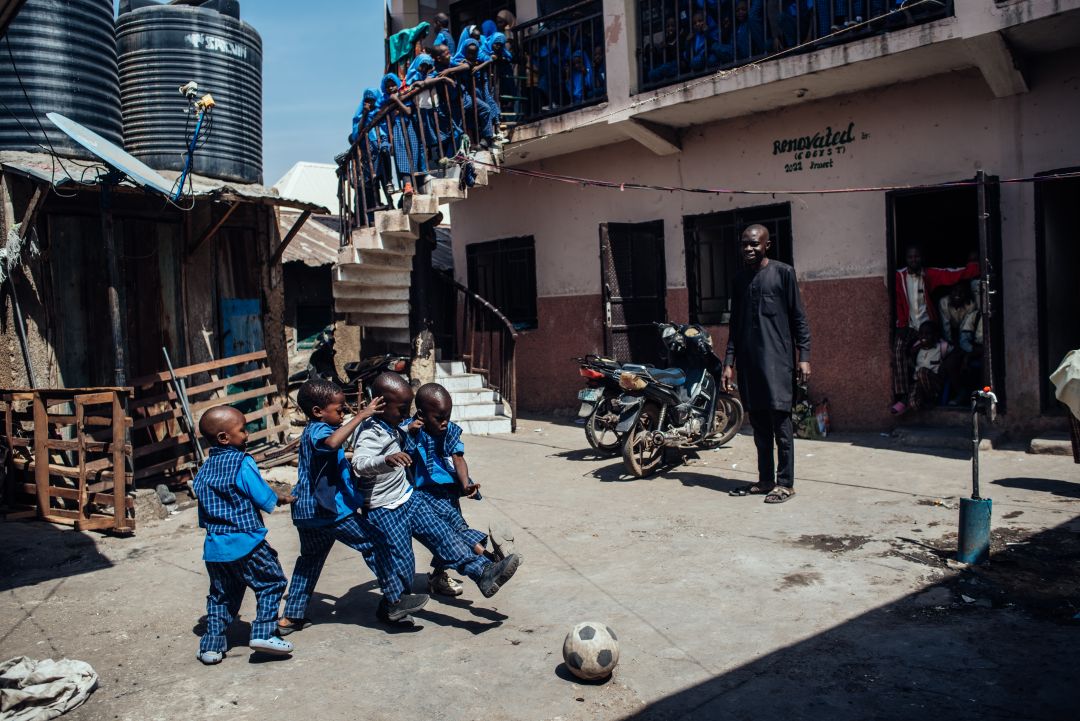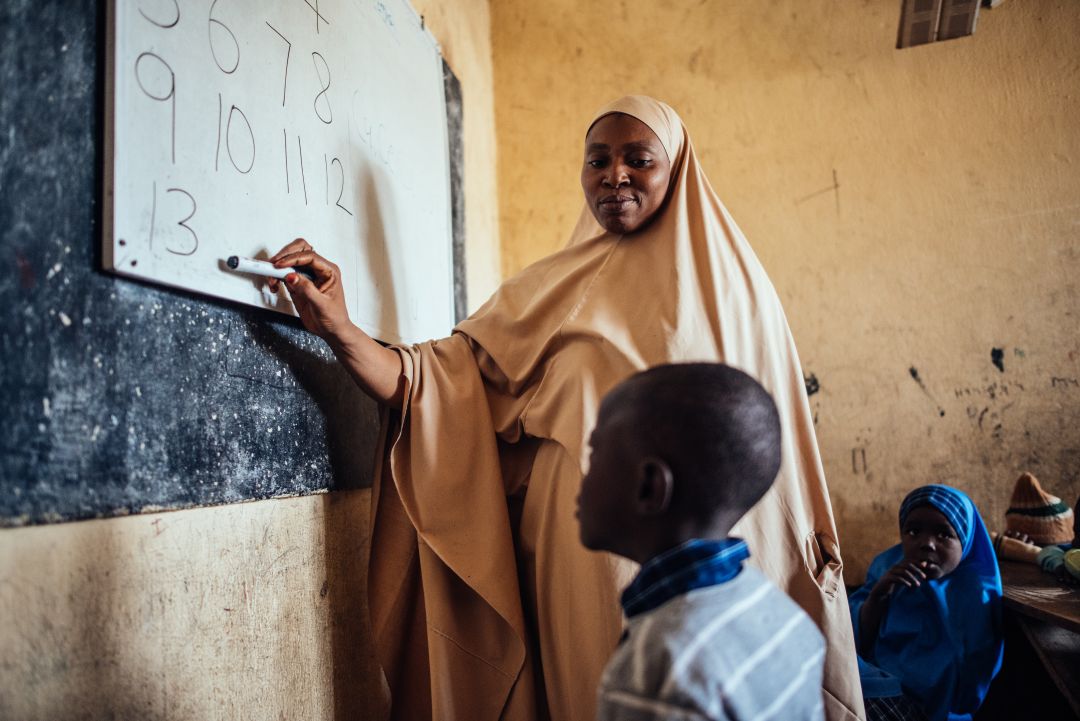At just four years old Muhammad was diagnosed with bilateral cataracts. This condition, often associated with older adults, can also affect young children, depriving them of their sight, their curiosity, and their simple joys in life. “My eye started closing a little bit. I was scared,” he shares.
Muhammad, a young boy living in Kaduna, Nigeria, struggled with basic tasks like drawing or playing football. In April 2022, his mother passed away due to complications from sickle cell disease. Since then, his grandmother, Halima, has cared for him. “Muhammad’s future was uncertain without the surgery. He couldn’t see or understand things. I was worried about what would happen to him next.” she said.

Muhammad’s father, Dawud Abubakar, did his best to support the family, but paying for surgery seemed impossible. “I felt helpless,” he admits. “I wanted my son to keep his vision, but I didn’t know how to make that happen.”
Bringing back sight and hope
Sightsavers, a non-governmental organization in official relations with the World Health Organization, helped Muhammad get referred to the National Eye Centre in Kaduna. There, under the guidance of ophthalmologist Dr Amina Hassan, a 40-minute surgical procedure was performed. This involved removing the cloudy lens and fitting a clear artificial lens, which changed Muhammad’s life. The next day, a nurse removed Muhammad’s bandages, and his eyes lit up. “I see my father,” he said happily. He hadn’t been able to see his father clearly, his favourite person, for many months.

Starting over
At the age of 6, life changed for Muhammad after his cataract surgery. “Now I can play better,” he says. He spends his days colouring, watching TV, and running on the field with friends. With his vision restored, he feels confident at school.

His grandmother watches him play with a bright smile. “Seeing Muhammad happy and running around gives me peace,” she says, “This surgery gave him back his childhood.”
Muhammad has started dreaming again. He wants to join the military, inspired by the bravery of soldiers. At the same time, he hopes to learn sewing skills like his father.

A look at what is possible
Through Sightsavers support, children like Muhammad are able to get an eye surgery that their family wouldn’t be able to afford, thus helping them get back to school and to actualize developmental milestones that would have been otherwise hindered by blindness.
To Muhammad, reuniting with his father was just the start.
Cataract is the cloudiness in the lens of the eye, leading to increasingly blurred vision. It is the leading cause of blindness globally, impacting 94 million people worldwide. Vision loss due to cataract can be restored overnight with a simple and cost-effective surgery. In adults, the risk of developing cataract increases with age, but other factors can accelerate their development. In children, they can be congenital (present at birth) or develop later, often due to genetic factors, infections, or other underlying conditions. While cataracts may not be entirely preventable, there are lifestyle changes and habits that can be adopted to reduce the risk and delay their onset.
After cataract surgery, eyeglasses often remain important for optimizing vision. They provide a safe, non-invasive way to fine-tune sight and correct any remaining refractive error. Many people still need eyeglasses for near tasks such as reading or other near work. A check for new eyeglasses is usually recommended once the eye has healed and vision has stabilized, typically a few weeks after surgery.
This story was developed by Sightsavers in collaboration with the WHO Vision and Eye Care Programme.
Photo credits: Sightsavers / KC Nwakalor.
